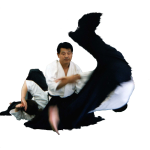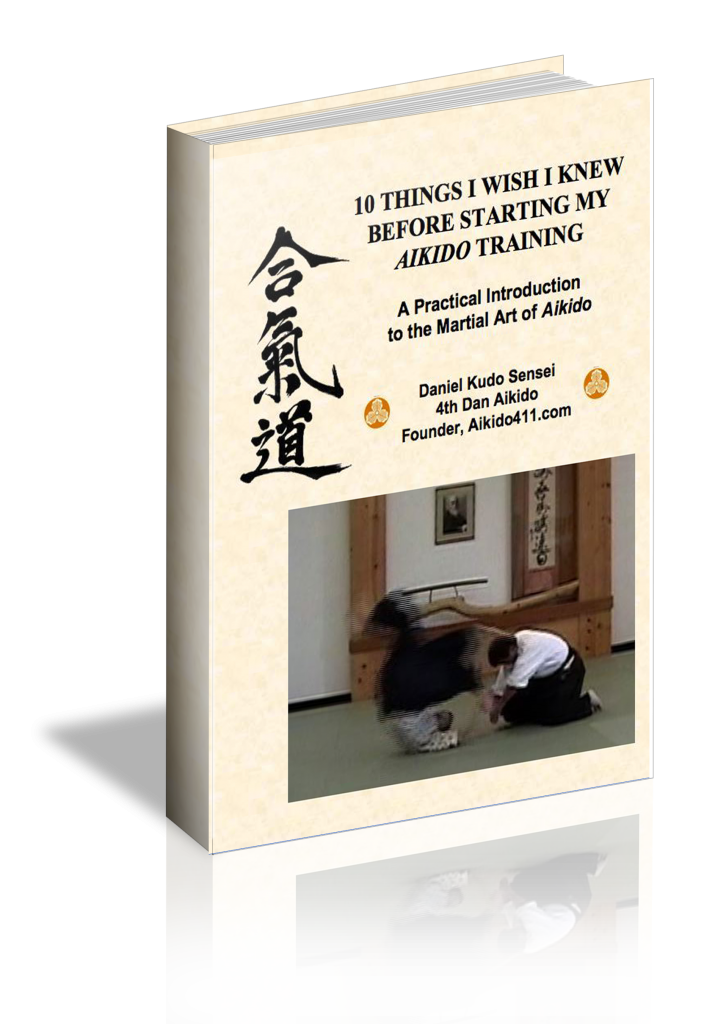Aikido Techniques: Kokyunage, a Basic AND Advanced Technique

Aikido Techniques Author: Dan Kudo Sensei
Koyunage is roughly translated “breath throw” or “timing throw” but actually represents many different types of Aikido techniques. Some variations are known as kihon waza or basic Aikido techniques. The classic attack utilizing this defense is shomenuchi (overhead blow).
The key elements of kokyunage include:
– Getting out of the way – moving “off the line”.
– Blending with uke’s ki.
– Redirecting the force to unsettle uke’s ki, balance, and to gain control of uke’s center.
– Projecting uke’s ki and body into a throw.
O’Sensei, Morihei Ueshiba, demonstrates kokyunage Aikido techniques in the following video.
Getting out of the way – Moving “off the line” in some arts the energy of an attack may be met “head on” with a block which can be very effective. There is, however, a limitation to meeting an attack force-on-force in that if there is a large difference in any combination of size, power, speed, the defender on the adverse end of this scale may have considerable difficulty successfully neutralizing the attack. The first syllable of Aikido is “Ai” which means harmony. In the vast majority of Aikido techniques nage steps or shifts off the line to allow the energy to pass – unrestricted. This permits even the smallest person, say a woman, to begin their defense without attempting to meet the force directly.
Aikido Techniques: Blending and Harmonization
Blending with Ki – The second component of Aikido techniques is the blending or harmonization with the force, which often requires engaging the whole body in the defensive movement. It often requires nage to move his center very close to uke’s and even to change body position to face the same direction (often analogous to exchanging places with uke). Aiki taiso exercises such as ude furi choyaku undo are designed specifically for such blending of energies rather than getting in the way of them.
Redirecting Ki – In order to successfully execute ANY Aikido technique whether a katame waza (for example a joint control technique) or a kokyunage or projection throw, uke‘s balance, which is central to his power, must be disturbed. If this is not achieved, a successful control technique or throw will be difficult if not impossible. The table is set for redirection of ki by the effective blending or harmonizing with the force and momentum of the attack. All four of the basic principles of Aikido are brought into play. Weight Underside and Extend Ki are often combined to redirect the flow of motion and energy to further unbalance uke. The real throw has occurred well before what the observer sees as the actual technique.
Projecting Ki – What most “outsiders” see as the technique is actually just the follow through. In the projection throw, iriminage, what appears as a “clothesline” technique may actually be a simple redirecting of uke’s ki or momentum downward. If one watches the technique in slow motion, uke’s ki (translated as the forward intent and momentum) have been taken away often causing the head to trail the lower body and resulting is the actual center of gravity to be behind uke. With balance taken, all nage need do is drop his center and the attacker falls backward. The “clothesline” that you see is really only the follow through rather than what is actually throwing uke.
Aikido techniques, whether joint locks or projection throws utilize the concepts of blending with the force, and redirecting it. Aikido seeks to minimize conflict through this harmonization.
Dan Kudo Sensei trains and teaches in Santa Ana, California, located in Orange County, and holds the rank of Yondan (fourth degree black belt). Click here to view a demonstration of the Aikido techique of kokyu nage.

Leave a Reply